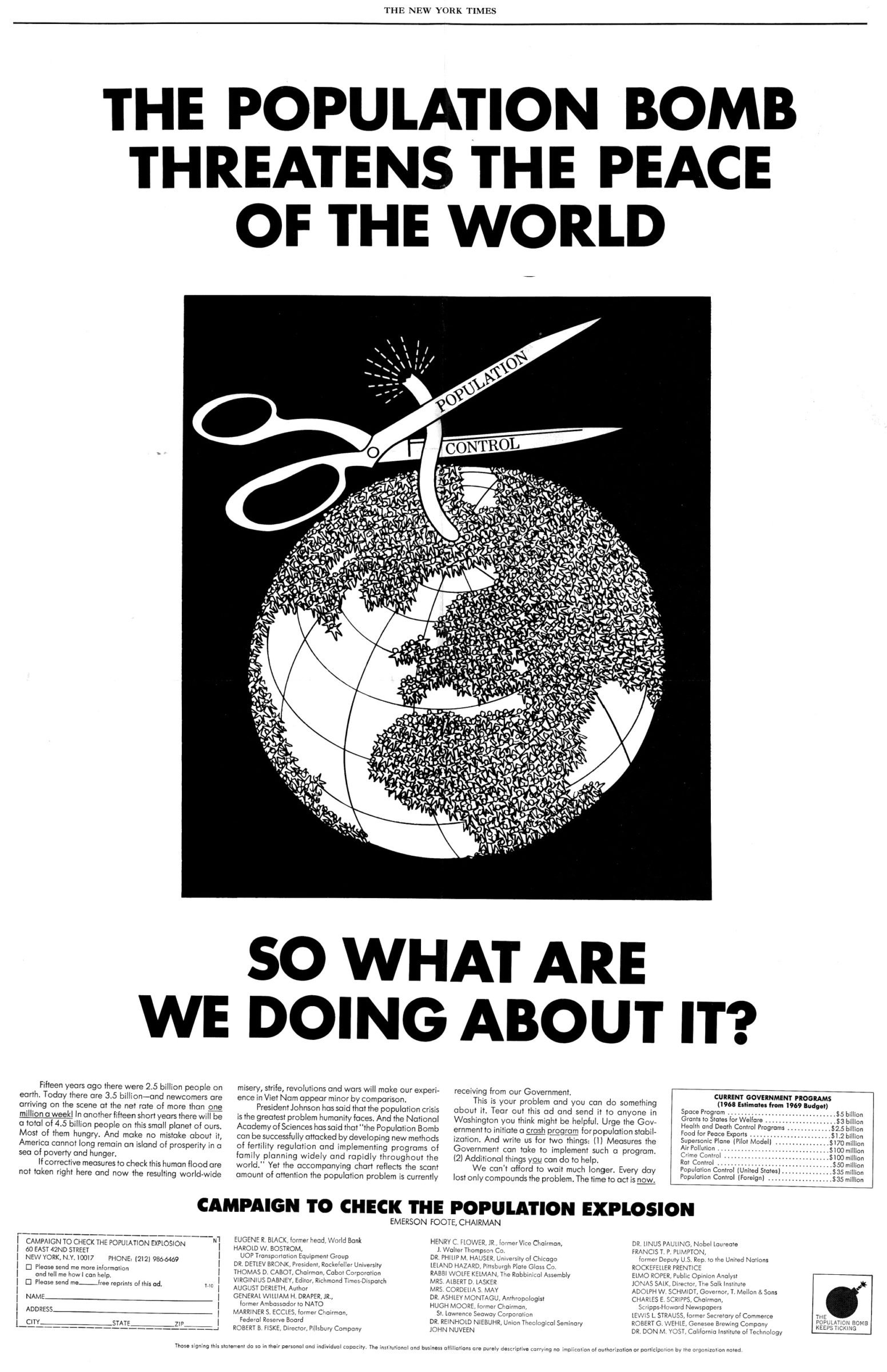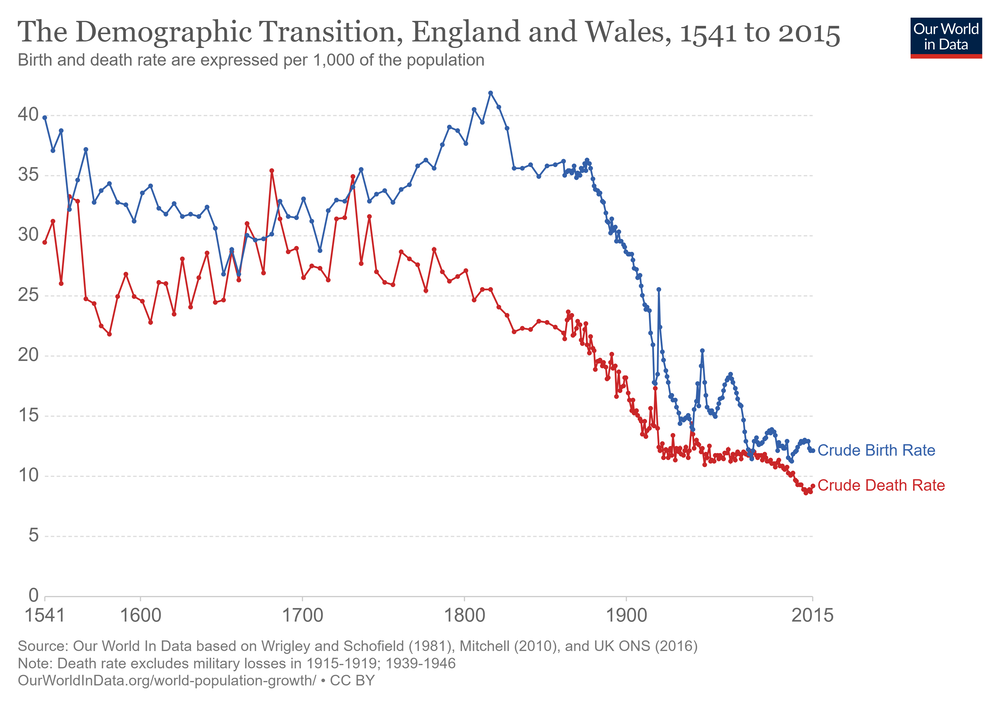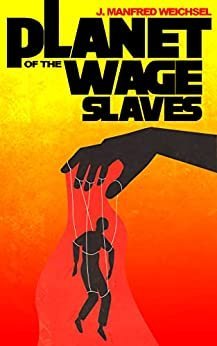Linkfest 2022-10-08: The Population Bombed

The New Atlantis: The Population Control Holocaust
Robert Zubrin details the horrors of both privately and publicly driven population control programs of the twentieth century. At the time, much effort was expended to try and ensure that overpopulation didn’t destroy the world. However, now that almost everywhere in the world, other than sub-Saharan Africa, has actually gone below replacement fertility, no one remembers what the machinery was or why it was erected, and it chugs along even though its ostensible purpose has been achieved.
Linkfest 2022-07-01: Memory of Man: Humans Verus Homo Sapiens
the human-life question will turn out to be epiphenomenal to the end of the abortion era. Contraception, abortion, and homosexuality were all features of a human-rights package that was designed, at least in part, to lower the birthrate. The intellectual and cultural climate on this issue is changing very rapidly. The interesting thing is that, whereas the courts that created these rights tended to avoid the suggestion that they were really implementing a population-control program, the courts now seem open to explicitly pro-natalist arguments.
Moms' Employment After the Kids Grow Up
There’s been a lot of debate over how much money women earn relative to men—and why. As I noted last year in my review of the economist Claudia Goldin’s Career and Family, the gap is mostly not attributable to discrimination by employers, and only about a third of it is explained by the fact that women cluster in somewhat lower-paid occupations. The biggest culprit, instead, is children: when a baby arrives, it’s usually the mother who scales back her paid work to dedicate more time to child care and other work in the home.
But what happens in the decades that follow, as kids slowly become more self-sufficient and eventually move out? That’s the focus of an illuminating new study from Goldin and two coauthors. The conclusion is that older moms regain most of the ground they lost to women without kids, but they do not close the gap with fathers.
…
So, what on earth is going on with that? Bluntly, men earn more when they have kids, at least in part because they work longer hours—and dads especially pull away from other workers in occupations that lavishly reward employees who work long hours. As Goldin et al. remark, splitting their analysis in two based on the time intensity of the jobs these folks held early in their careers, “men who had time-intensive occupations when younger were enabled or motivated to work even harder when they had children than were men who were not fathers.” As for why this is the case, having kids in itself “may motivate them,” and wives who stay home or work part time “may further enable fathers to focus on their careers (by easing time constraints or offering advice and motivation).”
This brings us to the cultural front. It is a good bet that Steyn is prophetic when he tells us, “By 2015, almost every viable political party in the West will be natalist.” And what should the platforms of these Mewling Infant Parties contain? “We need to find a way to restore advantage to parenthood in the context of modern society. Shrink the state. If you got four dependents, your taxable income is to be divided by five. We must end deferred adulthood.” And how do we do that? “We need to redirect the system to telescope education into a much shorter period.” The upshot, apparently, is that educated people should be educated faster so that they will normally have children while they’re in their twenties. We hear not one word that these proposals, though perhaps inevitable, will mean that the life courses of men and women will diverge again.
The Times: Doppelgängers’ genes make them act alike too
Could there be someone out there in the world, some unrelated stranger, who not only looks exactly like you but behaves like you too? Might you have a genetic doppelgänger?
Scientists have analysed “extreme lookalikes”, unrelated people who bear a striking resemblance to one another, and found that they share genetic variants which not only make them look similar but also act in a similar way.
None of the lookalike pairs studied by researchers in Barcelona had any familial relationship. They were found by the Canadian artist François Brunelle, who since 1999 has been gathering photographs of unrelated people who bear an uncanny resemblance to each other.
Sometimes rare experimental outcomes tell you a lot, as when a few of the alpha particles impinging on a gold foil were scattered straight back [Geiger-Marsden experiment] , implying that most of the mass and positive charge of an atom is concentrated in a tiny nucleus.
Let’s think about the Jim Twins. Chevys, Miller Lite, migraines, chain-smoking, finger-nail chewing, baseball hating, vacationing on the same three-block beach near St, Petersburg, both leaving love notes around the house, both building a circular white bench around a tree in the front yard. Tests of intelligence, personality, heart rate, and brain waves were about as similar as the same person taking the test twice.
Let’s face it: the Jim Twins were the same guy twice. At least in this case, Nature utterly pwned Nurture.
It looks as if this was a tale that grew with the telling. The LA Times continues to put out some excellent journalism.

I inherited my interest in demography from John J. Reilly. If you want more, why not check out everything tagged demography? I’ve got quite a bit of data and charts to peruse.

With Both Hands: Planet of the Wage Slaves by J. Manfred Weichsel
Perhaps here I should define satire, as I have learned, through the course of promoting myself as a satirist, that a lot of people don’t know what satire is, and confuse it with parody. The primary difference between the two is that parody makes fun of fiction, while satire makes fun of reality.
Comments ()